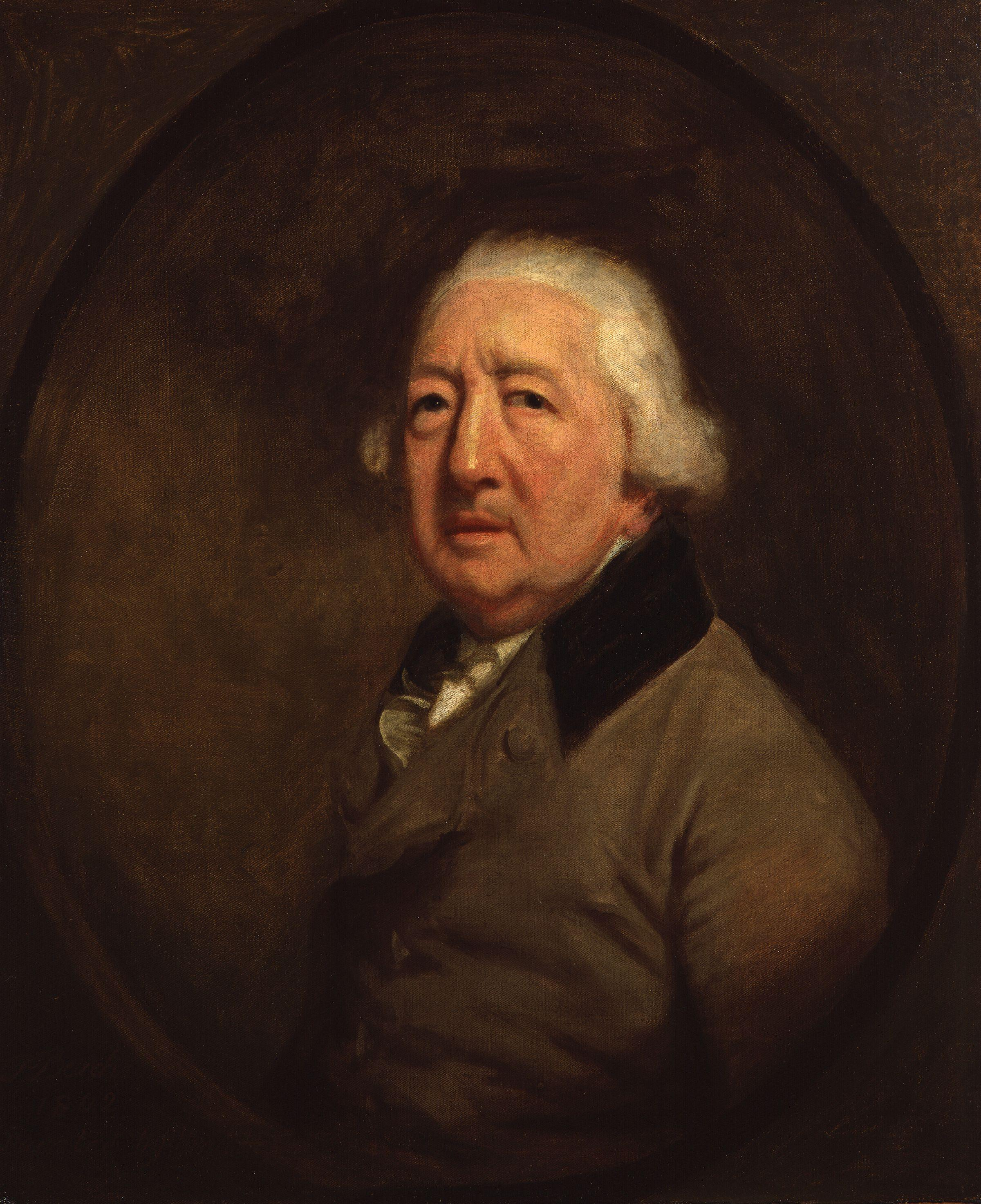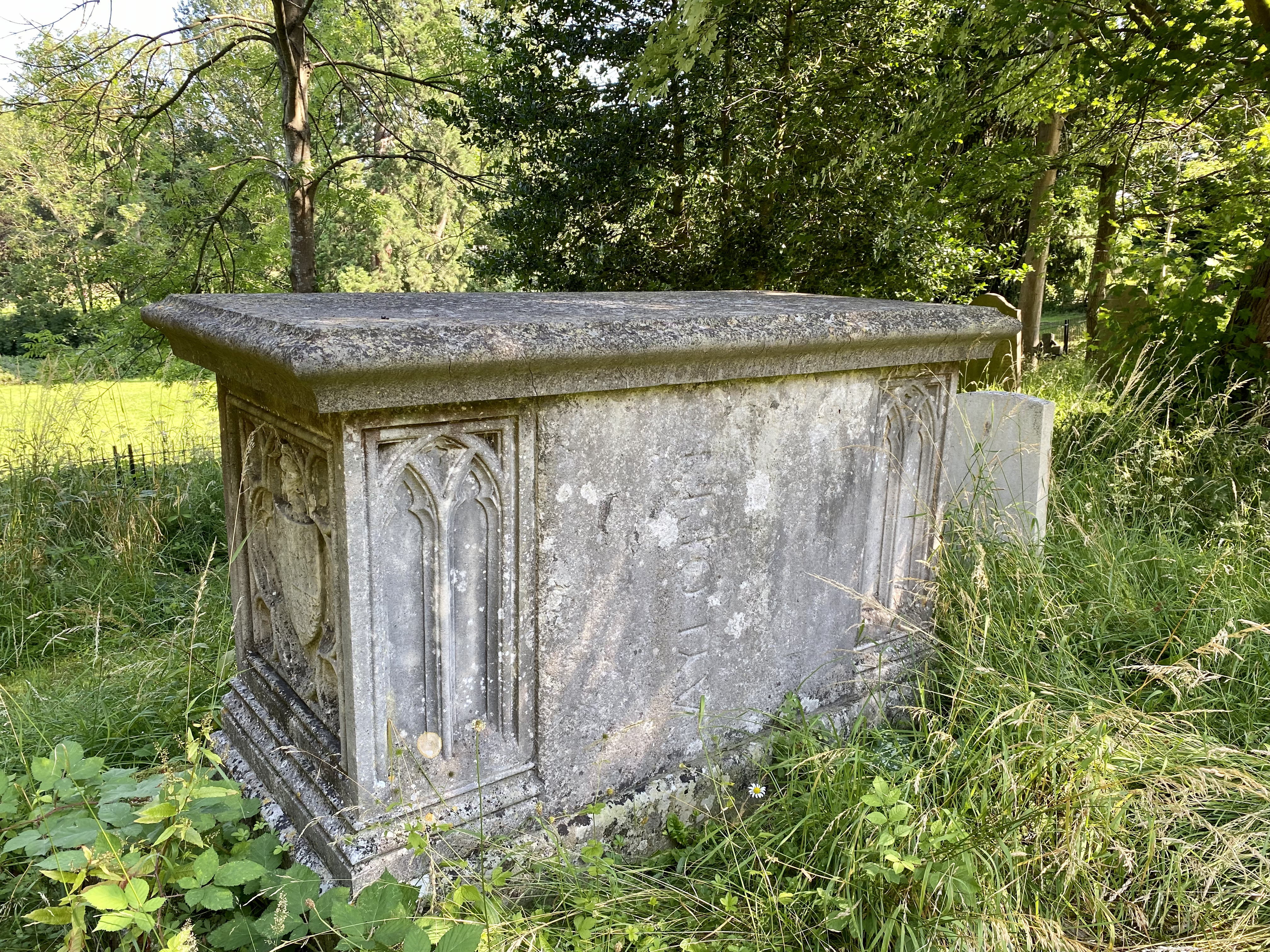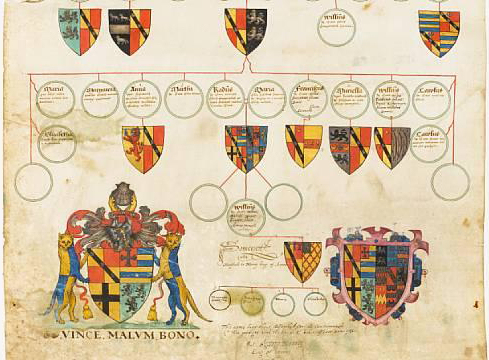|
Joseph Edmondson
Joseph Edmondson (died 1786), was an English herald and genealogist whose principal work is the ''Baronagium Genealogicum'' ("or the Pedigrees of the English Peers, Deduced from the Earliest Times: Originally Compiled by Sir William Segar, and Continued to the Present Time"), 5 volumes, published in London, 1764. Career Edmondson was originally apprenticed to a barber, but afterwards became a coach-painter, and being much employed in emblazoning arms on carriages was led to the study of heraldry and genealogy. He was elected a fellow of the Society of Antiquaries of London, Society of Antiquaries, and in March 1764 was created Mowbray Herald Extraordinary. This appointment in the College of Arms did not prevent him from continuing the coach-painting business, which he carried on successfully for many years. The appearance of his ''Baronagium'' (1764) attracted the attention of the nobility, and brought him much employment in the compilation of Pedigree chart, pedigrees. Most of t ... [...More Info...] [...Related Items...] OR: [Wikipedia] [Google] [Baidu] |
Joseph Edmondson
Joseph Edmondson (died 1786), was an English herald and genealogist whose principal work is the ''Baronagium Genealogicum'' ("or the Pedigrees of the English Peers, Deduced from the Earliest Times: Originally Compiled by Sir William Segar, and Continued to the Present Time"), 5 volumes, published in London, 1764. Career Edmondson was originally apprenticed to a barber, but afterwards became a coach-painter, and being much employed in emblazoning arms on carriages was led to the study of heraldry and genealogy. He was elected a fellow of the Society of Antiquaries of London, Society of Antiquaries, and in March 1764 was created Mowbray Herald Extraordinary. This appointment in the College of Arms did not prevent him from continuing the coach-painting business, which he carried on successfully for many years. The appearance of his ''Baronagium'' (1764) attracted the attention of the nobility, and brought him much employment in the compilation of Pedigree chart, pedigrees. Most of t ... [...More Info...] [...Related Items...] OR: [Wikipedia] [Google] [Baidu] |
Francis Hargrave
Francis Hargrave (c.1741–1821) was an English lawyer and antiquary. He was the most prominent of the five advocates who appeared on behalf of James Somersett in the case which determined, in 1772, the legal status of slaves in England. Although the case was Hargrave's first, his efforts on the occasion secured his reputation. Life Hargrave was born in London, the son of Christopher Hargrave of Chancery Lane. He entered as a student at Lincoln's Inn in 1760. He came to prominence because of his performance in 1772, in Somersett's case, and shortly afterwards was made King's Counsel. Thereafter, he specialised in legal history and commentary and did not take further part in the abolitionist campaign. In 1797 he was made Recorder of Liverpool, and for many years was treasurer of Lincoln's Inn and a leading parliamentary lawyer. He continued the celebrated compendium of State Trials begun by Thomas Salmon and Sollom Emlyn, which was later expanded by Thomas Bayly Howell. He fell i ... [...More Info...] [...Related Items...] OR: [Wikipedia] [Google] [Baidu] |
1786 Deaths
Events January–March * January 3 – The third Treaty of Hopewell is signed, between the United States and the Choctaw. * January 6 – The outward bound East Indiaman '' Halsewell'' is wrecked on the south coast of England in a storm, with only 74 of more than 240 on board surviving. * February 2 – In a speech before The Asiatic Society in Calcutta, Sir William Jones notes the formal resemblances between Latin, Greek, and Sanskrit, laying the foundation for comparative linguistics and Indo-European studies. * March 1 – The Ohio Company of Associates is organized by five businessmen at a meeting at the Bunch-of-Grapes Tavern in Boston, to purchase land from the United States government to form settlements in what is now the U.S. state of Ohio. * March 13 – Construction begins in Dublin on the Four Courts Building, with the first stone laid down by the United Kingdom's Viceroy for Ireland, the Duke of Rutland. April–June * April 2 ... [...More Info...] [...Related Items...] OR: [Wikipedia] [Google] [Baidu] |
Year Of Birth Missing
A year or annus is the orbital period of a planetary body, for example, the Earth, moving in its orbit around the Sun. Due to the Earth's axial tilt, the course of a year sees the passing of the seasons, marked by change in weather, the hours of daylight, and, consequently, vegetation and soil fertility. In temperate and subpolar regions around the planet, four seasons are generally recognized: spring, summer, autumn and winter. In tropical and subtropical regions, several geographical sectors do not present defined seasons; but in the seasonal tropics, the annual wet and dry seasons are recognized and tracked. A calendar year is an approximation of the number of days of the Earth's orbital period, as counted in a given calendar. The Gregorian calendar, or modern calendar, presents its calendar year to be either a common year of 365 days or a leap year of 366 days, as do the Julian calendars. For the Gregorian calendar, the average length of the calendar year (the mea ... [...More Info...] [...Related Items...] OR: [Wikipedia] [Google] [Baidu] |
Thomas Beach (painter)
Thomas Beach (1738 – 17 December 1806) was a British Portrait painting, portraitist who studied under Sir Joshua Reynolds. Life and work Beach was born at Milton Abbas, Dorset in 1738, and showed. a strong predilection for art from an early age. In 1760, under the patronage of Earl of Dorchester, Lord Dorchester's family, he became a pupil of Sir Joshua Reynolds, while at the same time studying at the St. Martin's Lane Academy. He then settled at the fashionable resort of Bath, Somerset, Bath, where he was much in demand for his portraits and portrait groups, which were usually of a small size. He painted the actress Sarah Siddons several times. In his first portrait of her, painted in the winter of 1781–2, she is shown seated, in everyday clothes, holding a book. He depicted her again later in 1782, in one of his more ambitious works, an allegorical portrait inspired by John Milton, Milton's ''Il Penseroso'', in which she represented the personification of ''Melancho ... [...More Info...] [...Related Items...] OR: [Wikipedia] [Google] [Baidu] |
Mezzotint
Mezzotint is a monochrome printmaking process of the '' intaglio'' family. It was the first printing process that yielded half-tones without using line- or dot-based techniques like hatching, cross-hatching or stipple. Mezzotint achieves tonality by roughening a metal plate with thousands of little dots made by a metal tool with small teeth, called a "rocker". In printing, the tiny pits in the plate retain the ink when the face of the plate is wiped clean. This technique can achieve a high level of quality and richness in the print. ''Mezzotint'' is often combined with other ''intaglio'' techniques, usually etching and engraving. The process was especially widely used in England from the eighteenth century, to reproduce portraits and other paintings. It was somewhat in competition with the other main tonal technique of the day, aquatint. Since the mid-nineteenth century it has been relatively little used, as lithography and other techniques produced comparable results more easil ... [...More Info...] [...Related Items...] OR: [Wikipedia] [Google] [Baidu] |
Tabard
A tabard is a type of short coat that was commonly worn by men during the late Middle Ages and early modern period in Europe. Generally worn outdoors, the coat was either sleeveless or had short sleeves or shoulder pieces. In its more developed form it was open at the sides, and it could be worn with or without a belt. Though most were ordinary garments, often work clothes, tabards might be emblazoned on the front and back with a heraldry, coat of arms (livery), and in this form they survive as the distinctive garment of Officer of Arms, officers of arms. In modern British English, British usage, the term has been revived for what is known in American English as a Apron#Tabard, cobbler apron: a lightweight open-sided upper overgarment, of similar design to its medieval and heraldic counterpart, worn in particular by workers in the catering, cleaning and healthcare industries as Personal protective equipment, protective clothing, or outdoors by those requiring high-visibility clo ... [...More Info...] [...Related Items...] OR: [Wikipedia] [Google] [Baidu] |
Joseph Ayloffe
Sir Joseph Ayloffe, 6th Baronet FRS, FSA (1708 – 19 April 1781, London) was an English antiquary. Life He was the great-grandson of Sir William Ayloffe, 1st Baronet, through his third wife (Alice, daughter of James Stokes of Stoke near Coventry), their first son was Joseph Ayloffe, Joseph Ayloffe, barrister-at-law of Gray's Inn and sometime recorder of Kingston upon Thames, who died in 1726 and was this man's father. Joseph was born in Sussex, and became 6th Baronet Ayloffe, of Braxted Magna; on his death, his baronetcy became extinct. Ayloffe was educated at Westminster School, admitted a student of Lincoln's Inn in 1724, and spent some time at St John's College, Oxford before 1728. In December 1730 he succeeded, as sixth in succession, to the family baronetcy on the death of his unmarried cousin, the Rev. Sir John Ayloffe, a descendant of the first family of the original holder of the title. Sir Joseph seems early in life to have shown an interest in antiquities. He rec ... [...More Info...] [...Related Items...] OR: [Wikipedia] [Google] [Baidu] |
Order Of St Patrick
The Most Illustrious Order of Saint Patrick is a dormant British order of chivalry associated with Ireland. The Order was created in 1783 by King George III at the request of the then Lord Lieutenant of Ireland, The 3rd Earl Temple (later created Marquess of Buckingham). The regular creation of knights of the Order lasted until 1922, when most of Ireland gained independence as the Irish Free State, a dominion within what was then known as the British Commonwealth of Nations. While the Order technically still exists, no knight of St Patrick has been created since 1936, and the last surviving knight, Prince Henry, Duke of Gloucester, died in 1974. Charles III, however, remains the Sovereign of the Order, and one officer, the Ulster King of Arms (now represented in the office of Norroy and Ulster King of Arms), also survives. St Patrick is patron of the order; its motto is '' Quis separabit?'', Latin for "Who will separate s": an allusion to the Vulgate translation of Romans 8:3 ... [...More Info...] [...Related Items...] OR: [Wikipedia] [Google] [Baidu] |
Tricking
Tricking is a method for indicating the tinctures (colours) used in a coat of arms by means of text abbreviations written directly on the illustration. Tricking and hatching are the two primary methods employed in the system of heraldry to show colour in black and white illustrations. Origin Heraldry has always had some methods to designate the tinctures of arms. The earliest such method was blazon, which is describing the arms by words. The earliest surviving blazon is from the work of Chrétien de Troyes from the late 1100s. The English heraldry system still uses a form of blazon almost unchanged since the reign of Edward I. Traditionally, images in heraldic manuscripts such as rolls of arms and armorials are all coloured. With the spread of the printing press, woodblock printing and copperplate engravings in the 1400s, there arose the need for designating the colours in uncoloured illustrations as well, since printing in full colour was too labour- and cost-intensive. As ... [...More Info...] [...Related Items...] OR: [Wikipedia] [Google] [Baidu] |
Thomas Moule
Thomas Moule (14 January 1784 – January 1851) was an English antiquarian, writer on heraldry, and one of Victorian England's most influential map-makers. He is best known for his popular and highly decorated county maps of England, steel-engraved and first published separately between 1830 and 1832. Moule was born in Marylebone, London. He sold books in Duke Street, Grosvenor Square, from 1816 to 1822. Later, he became an inspector of 'blind' (illegibly addressed) letters at the General Post Office. He died at his residence in St. James's Palace, to which he was entitled as Chamber-keeper in the Lord Chamberlain's Department. Works * * with John Preston Neale and John Le Keux * *with William Westall * with William Westall * with William Westall William Westall (12 October 1781 – 22 January 1850) was a British landscape artist best known as one of the first artists to work in Australia. Early life Westall was born in Hertford and grew up in London, mostly Syde ... [...More Info...] [...Related Items...] OR: [Wikipedia] [Google] [Baidu] |
Robert Glover (officer Of Arms)
Robert Glover (1544 – 10 April 1588) was an English Officer of Arms, genealogist and antiquarian in the reign of Elizabeth I. In the College of Arms, he rose to the rank of Somerset Herald of Arms, serving in that capacity from 1571 until his death in 1588. As marshal and deputy to his father-in-law, William Flower, Norroy King of Arms, he participated in heraldic visitations throughout northern England.''DNB'' (ed. Lee 1903)Norcliffe 1881, p. vii Life and work Robert Glover was the son of Thomas Glover of Ashford in Kent. He was appointed Portcullis Pursuivant of Arms in 1567 at the age of 24.Raines 1870, pp. x, xiii Glover was well respected among contemporary kings of arms. He was especially highly regarded for his accuracy and extensive professional knowledge and was regarded as an authority by the highest officials. Around 1570, he married Elizabeth Flower, daughter of William Flower, Norroy King of Arms. They had five children: Thomas, John, Robert, Ann, and Mildred. ... [...More Info...] [...Related Items...] OR: [Wikipedia] [Google] [Baidu] |









